Post-pandemic layoffs notwithstanding, Seattle remains a prime hub for tech employment. A recent study by commercial real-estate services firm CBRE found that the city was the top destination for recent tech grads, and second, behind Austin, across all experience levels. Seattle ranks overall as one of the country’s top 10 metros for tech jobs, and the sector accounts for a whopping 30 percent of the region’s economy, according to research by CompTIA, a trade association. At the same time, there is a pressing housing shortage. According to the county’s estimates, Seattle will need more than 100,000 new houses, condos, and apartments over the next 20 years. The dominance of tech exacerbates this housing crunch, since the industry’s well-paid workers strain the limited supply. The shortage is experienced most acutely by the city’s poorest, but also by its middle-income residents, many of whom can no longer afford to live near where they work.
One project responding to this urgent need is Heartwood, an eight-story, 67,000-square-foot apartment building completed earlier this year on the site of a former parking lot in the city’s Capitol Hill neighborhood. Designed by Seattle-based atelierjones, and owned by local nonprofit-housing operator Community Roots Housing, Heartwood offers 126 units (113 studios and 13 one-bedrooms), of which roughly one-third are income-restricted. With monthly rents for the unrestricted units starting below $1,400, the apartments are aimed at those earning between 60 to 100 percent of the area median income—the so-called “missing middle,” who earn too much to qualify for traditional affordable-housing programs but still struggle to find apartments within their means.
In addition to accommodating an underserved market, Heartwood is notable for its novel structural system. It has a mass-timber frame that is, in large part, exposed on the interior, conforming to the requirements for what is known as Type IV-C construction under the recently adopted tall-wood provisions of the 2021 version of the International Building Code (IBC)—the model code used by most jurisdictions in the U.S. According to Susan Jones, atelierjones’s founder, Heart-wood is the first in the nation to take advantage of the new IV-C classification, which pertains to buildings up to eight stories and 85 feet tall. The new standards also include a Type IV-B for buildings up to 12 stories and a Type IV-A for those up to 18 stories. With each increase in height, the code mandates greater levels of fire protection requiring, for instance, that more of the timber be encapsulated in noncombustible materials.
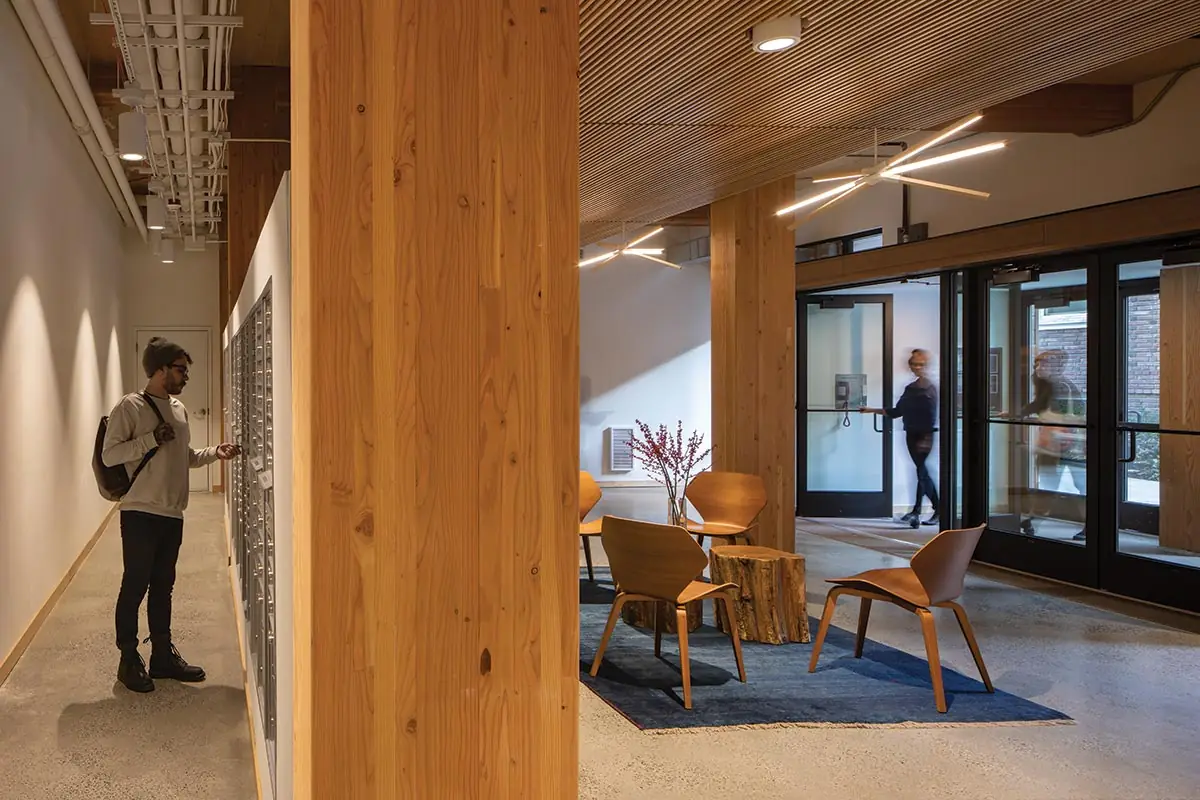
1
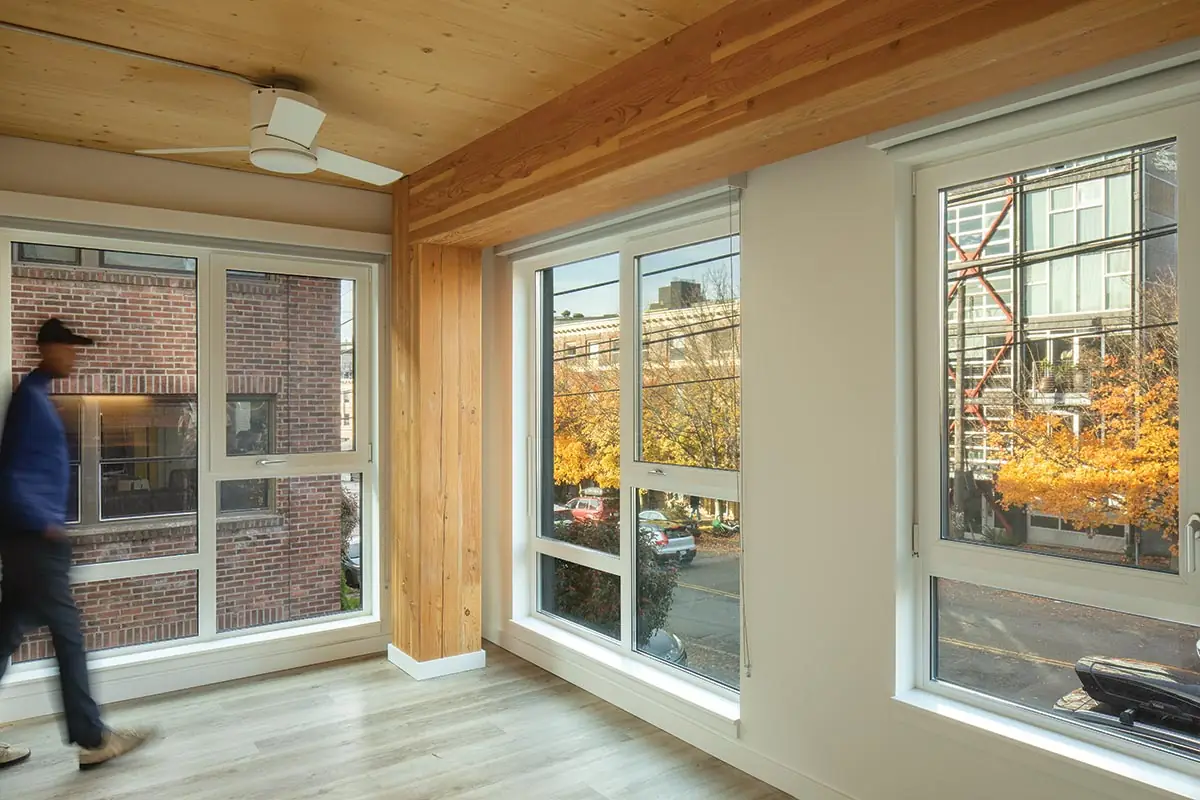
2
The timber is largely exposed throughout the building, in spaces that include the lobby (1), the apartments (2), and the corridors (3), where the seismic bracing at the cores is also visible.
Photos © Lara Swimmer, click to enlarge.
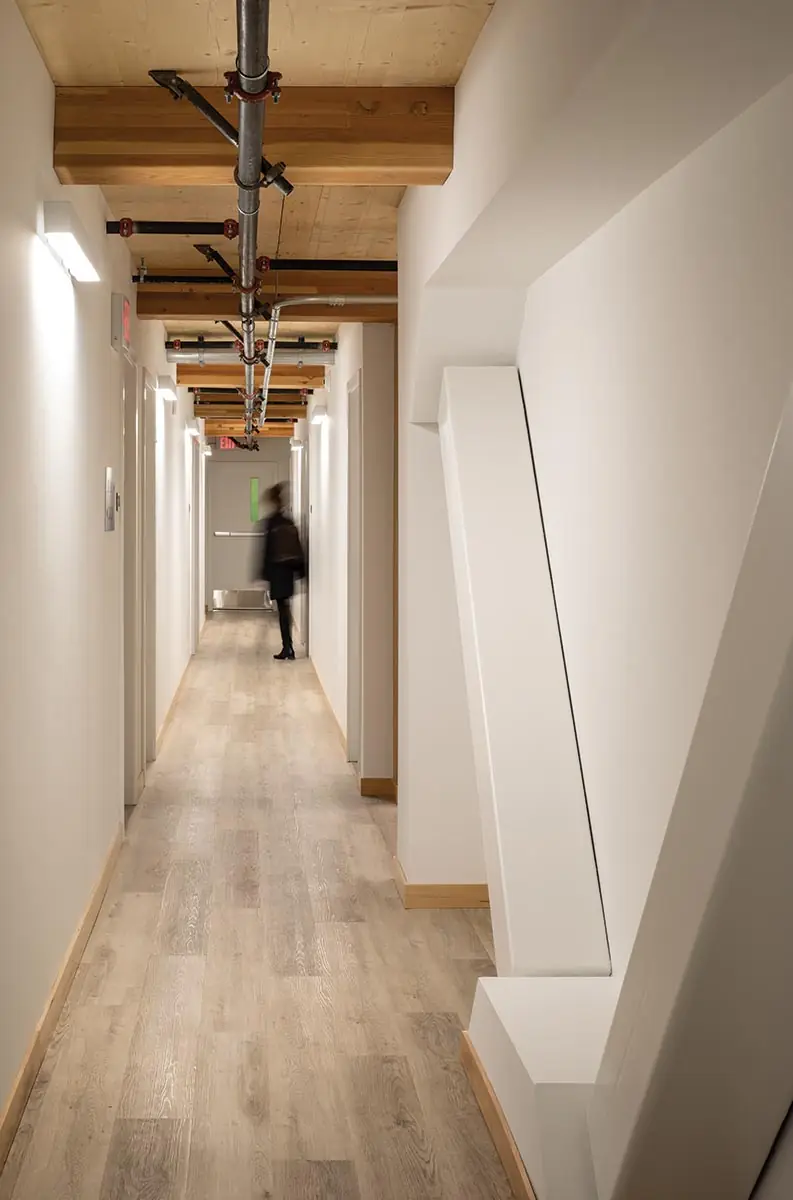
3
It is not surprising that Jones would opt for mass timber for Heartwood’s structural system. Since founding her practice in 2003, she has developed a deep expertise in the material, using it on projects that include her own house, a church, and prototype housing for residents of Greenville, California, who lost their homes in the 2021 Dixie Fire. She has long advocated for mass timber’s mainstream adoption, serving on the International Code Council committee that developed the IBC’s tall-wood requirements. Her interest in the material is primarily environmental—a means for mitigating construction’s carbon footprint.
Mass timber, however, was a less obvious choice for Community Roots Housing, which did not set out to build with the material or even work with atelierjones. As Jones recounts, in 2019 her firm had been awarded a $250,000 Wood Innovations Grant from the U.S. Forest Service to investigate the feasibility of Type IV-C construction—but for an office project, rather than a residential one, with another client. At the 11th hour, however, site control of the project fell through. To take advantage of the funds, Jones needed a new project. After reaching out to dozens of developers—through friend and colleague A-P Hurd, founder of real-estate consultancy, SkipStone Development—she connected with Community Roots, which was working with SkipStone to build workforce housing. The nonprofit agreed to partner with atelierjones. “It was one of the most joyous yeses I have ever received,” says the architect.
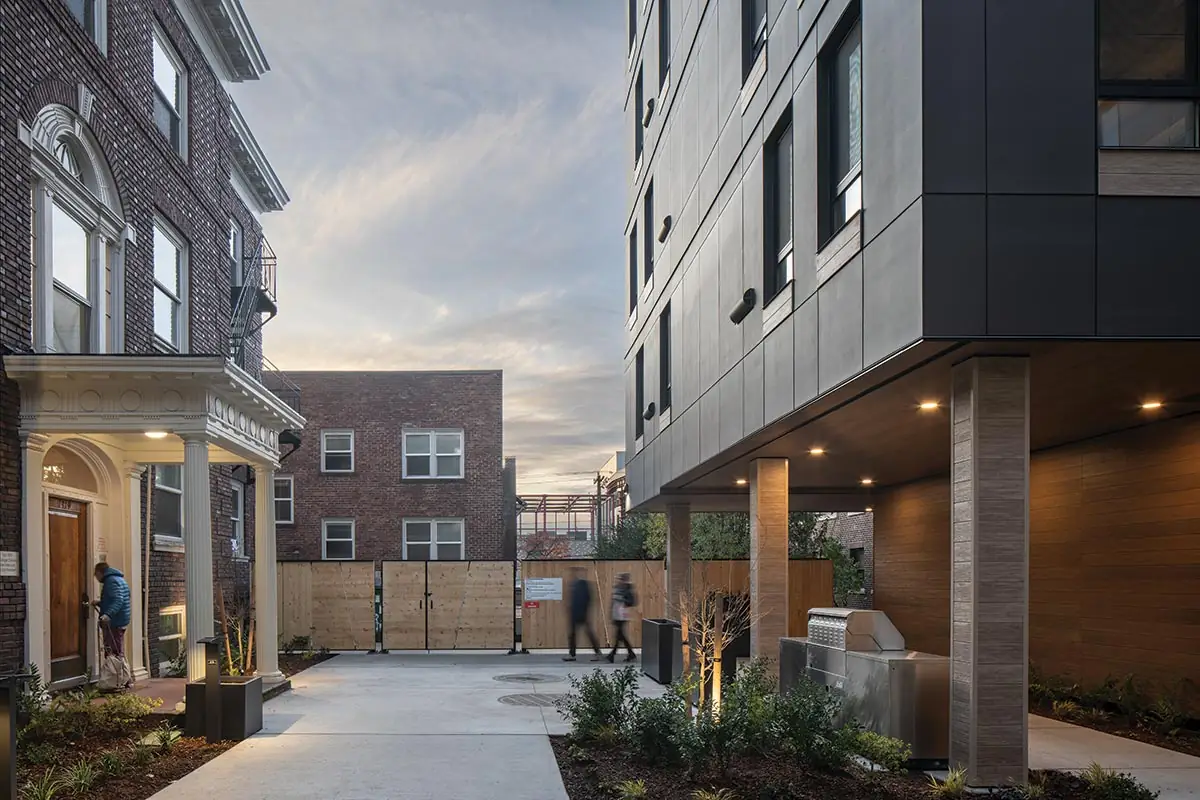
Heartwood shares a courtyard with an existing apartment building owned by the client. Photo © Lara Swimmer
People who walk by Heartwood, at the corner of East Union and 14th streets, will probably have no idea that there is something unusual going on beneath its understated fiber-cement-panel rainscreen skin. But on close inspection, one can detect a level of attention that is atypical in a mid-market multifamily project. For instance, the punched windows (all high-performance and triple-glazed) are slightly recessed and jog back and forth across the facade to create a subtle play of shadow and a syncopated rhythm. The first-floor apartments, entered directly from the exterior, are set back, creating almost the feel of townhouses. And if those passersby venture down 14th Street, they can catch a glimpse of an intimate courtyard—complete with barbecue area—shared with an existing three-story affordable apartment building owned and managed by the same client.
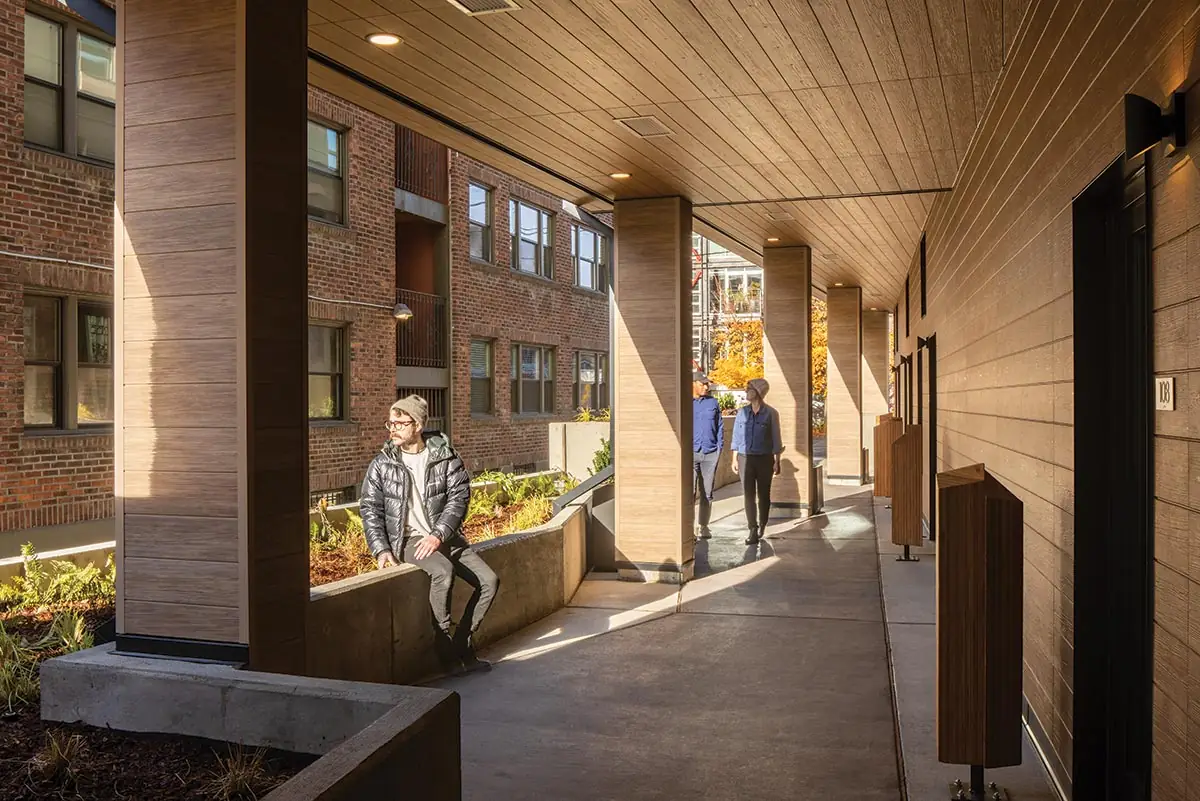
First-floor apartments are accessed directly from the exterior. Photo © Lara Swimmer
Behind Heartwood’s modest exterior is its mass-timber superstructure, whose wood elements were all sourced from within the surrounding Cascadia region: glulam columns and beams, five-ply cross-laminated timber (CLT) floor slabs, and mass plywood panel stairs enclosed, for seismic resistance, within steel buckling-restrained-brace-frame (BRBF) cores. The L-shaped assembly sits on top of a straightforward concrete slab and grade-beam foundation.
Working with a new code meant that atelierjones had to establish interpretations of its requirements, especially relating to fire protection. It developed details for the building’s myriad conditions, including where interior partitions or enclosed soffits meet exposed timber. The most elegant of these details is an all-wood mortise-and-tenon joint connecting columns and beams developed in collaboration with the structural consultant DCI Engineers and the company Timberlab, which performed virtual design coordination for Heartwood, as well as mass-timber fabrication and erection. The detail includes intumescent tape applied to the surfaces within the joint. If exposed to heat, the tape will expand, filling gaps and preventing fire infiltration. According to Timberlab, the absence of bolts, hangers, or other fasteners helped speed erection. On average, the beams for each level were installed in half a day, versus two to three days for steel connections.
The design and construction strategy yields compact apartments, averaging 400 square feet, with standard features, including drywall partitions, plastic-laminate cabinets, and vinyl flooring. But the timber frame and CLT ceilings provide warmth and natural appeal.
Beyond the biophilic benefits, Heartwood demonstrates a way of building with the potential for a significantly smaller environmental footprint compared with more conventional materials. According to a life-cycle analysis conducted by the University of Washington, the global-warming potential of Heartwood’s superstructure is 38 percent lower than a concrete building of the same size. If the carbon stored in the timber is included, the result is a 108 percent reduction, making Heartwood’s superstructure carbon negative.
The project is readily replicable and scalable; atelierjones has even assembled a booklet that shows how Heartwood’s guiding principles could be adapted to buildings of different sizes, heights, or site conditions. If the project proves popular with tenants, we could see hundreds of similar mass-timber structures around the country, helping tackle two of today’s most pressing problems—the earth’s warming and the housing shortage.
Click plans to enlarge
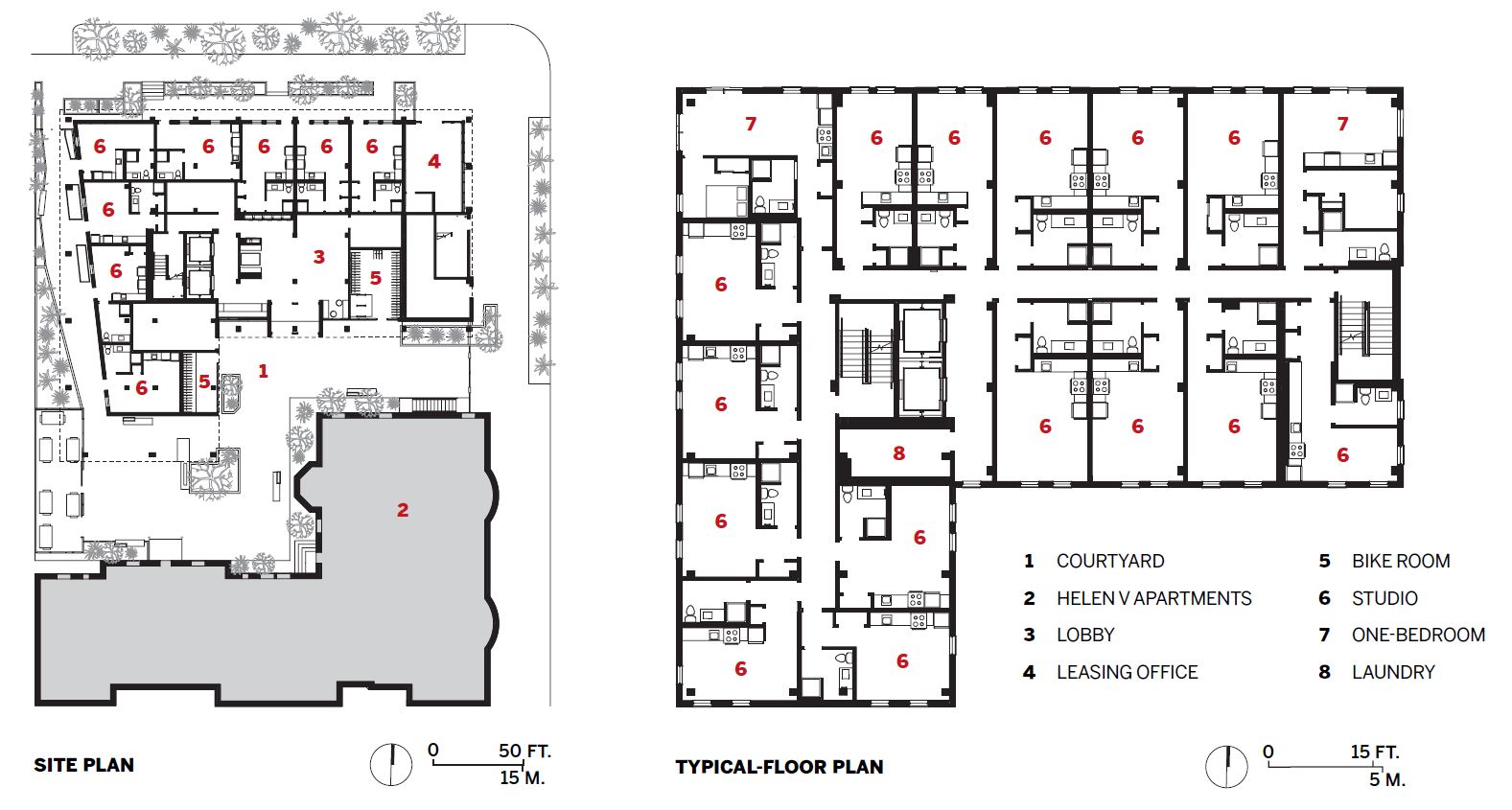
Click drawings to enlarge
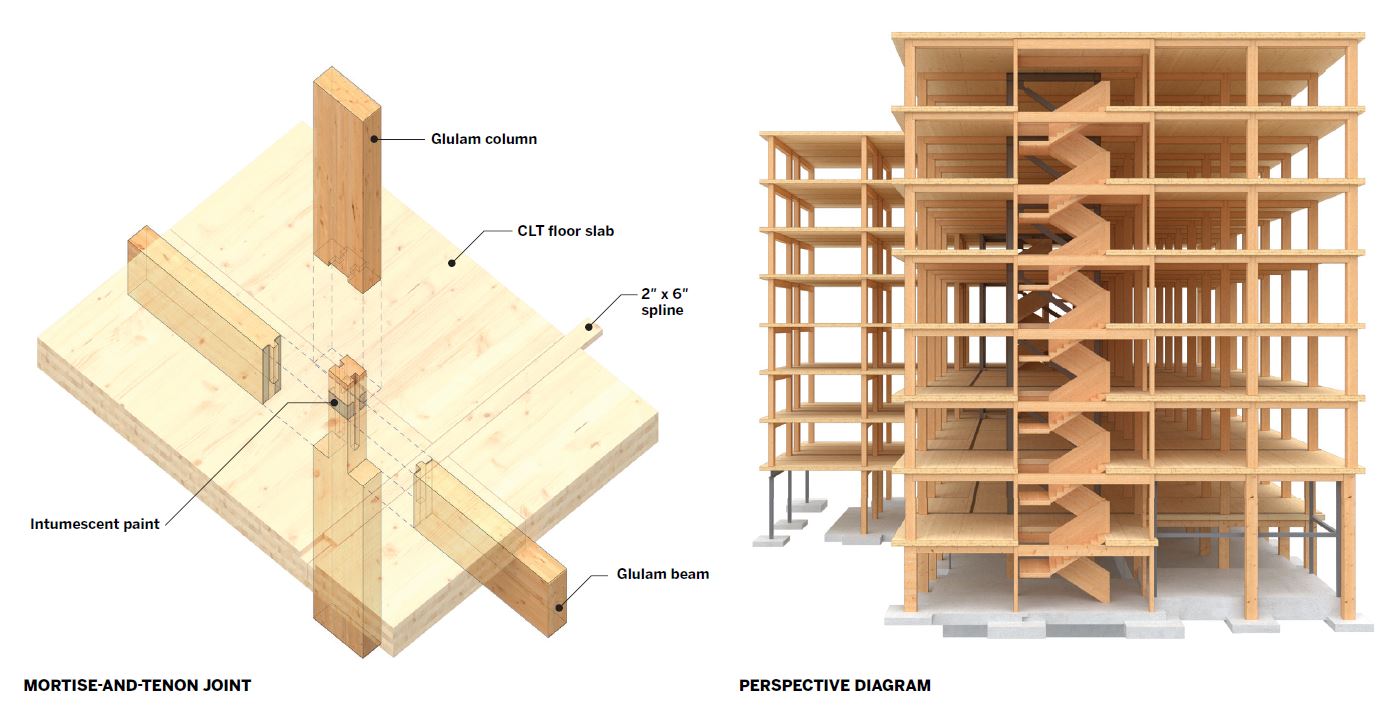
Click drawings to enlarge

Credits
Architect:
atelierjones—Susan Jones, principal architect; Ian Maples, job captain; Olga Amigud, Lenore Wan, Bron Heinz, Alex Zink, Eleanor Lewis, Meghan Doring, project team
Consultants:
HV Engineering (m/p); Bergelectric (electrical); DCI Engineers (structural, civil); Blueline Group (landscape); Greenbusch Group (acoustical); Wiss, Jenny, Elstner Associates (envelope, fire protection); WoodWorks (mass timber)
General Contractor:
Swinerton
Client:
Community Roots Housing
Size:
67,000 square feet
Cost:
Withheld
Completion Date:
February 2024
Sources
Facade Panels:
James Hardie, Nichiha
Mass Timber:
Timberlab (virtual design coordination, fabrication, erection)
Glulam: DR Johnson Lumber
CLT:
Kalesnikoff
Mass Plywood:
Freres Engineered Wood
Lateral System:
Superior Steel
Windows:
Eco Windows
Suspension Grid:
9Wood
Entrances:
Kawneer
Moisture Barrier:
VaproShield
Insulation:
Rockwool
Elevators:
Kone





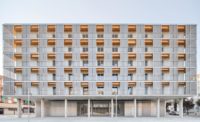
Post a comment to this article
Report Abusive Comment